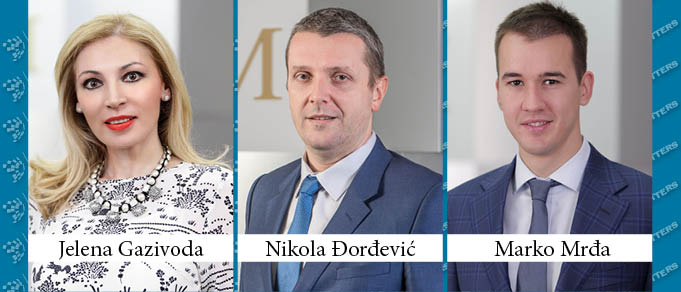The Government of the Republic of Serbia adopted the Regulation on Conditions and Criteria on Harmonized State Aid for Environmental Protection and Energy Sector (“Official gazette of the RS” no. 99/2021, hereinafter referred to as: “Regulation”).
The Regulation introduced detailed rules for granting harmonized state aid to market participants in the energy sector as well as to the market participants for investment in environmental protection, regardless of the sector they are in.
Criteria for harmonized state aid
The main criteria for state aid to be harmonized, as prescribed by the Regulation, are transparency, the effect of incentives and justification of costs.
State aid is deemed to be transparent if the total gross amount of state aid may be calculated without the need for the assessment of risk from excessive state aid. Examples of transparent state aid are subvention and subsidized interest rate of loans, the guarantee - if it is calculated as the gross monetary equivalent of the subvention, loan - if the gross monetary equivalent is calculated based on the reference interest rate in force at the time the state aid is granted, etc.
In order for state aid to have the effect as an incentive, eligible entity files must file a request for state aid before the implementation of the project or, start of conducting an activity.
It is worth noting that the granter of state aid is responsible to determine the amount of justified costs of investment. When the justified costs are determined, the amount of state aid is calculated as a certain percentage of such costs, all in line with the rules envisaged by the Regulation.
Investments subject to harmonized state aid
The Regulation sets out various investments for which harmonized state aid may be granted. This article provides a brief overview of such investments.
One of them is an investment in environmental protection measures. Such investment must aim to achieve higher environmental standards than prescribed in the Republic of Serbia, or to achieve higher environmental protection when lacking environmental standards. Also, it may comply with standards that are prescribed but still not in force in the Republic of Serbia.
Additionally, for investment in energy efficiency measures state aid may be requested, if such investment improves energy efficiency beyond applicable standards in the Republic of Serbia.
Harmonized state aid may be granted for investment in the project of highly efficient cogeneration of thermal and electric energy, provided that investment is made in new or renovated generation facilities. By investing in highly efficient cogeneration, the overall savings of primary energy must be ensured, compared to the separate generation of thermal and electric energy.
Concerning the generation of electric energy from renewable energy sources, new and innovative technologies for the generation of electric energy are eligible for state aid, as well as generation in small facilities i.e., facilities with an installed power of less than 500 kW.
Harmonized state aid may be granted for investment in the recycling and reuse of waste, produced by other market participants and which would otherwise be disposed of or treated in a less environmentally friendly manner.
Additionally, state aid may be approved for an environmental impact assessment study which is conducted for investment listed in the Regulation.
The Regulation for each particular investment sets out rules on how to assess and determine justified costs, as well as sets out limits for state aid. State aid for the majority of investments may not exceed 15.000.000,00 EUR per market participant.
Last but not least, the Regulation does not prohibit the cumulation of state aids.
By Jelena Gazivoda, Partner, Nikola Djordjevic, Partner, and Marko Mrdja, Senior Associate, JPM Jankovic Popovic Mitic
